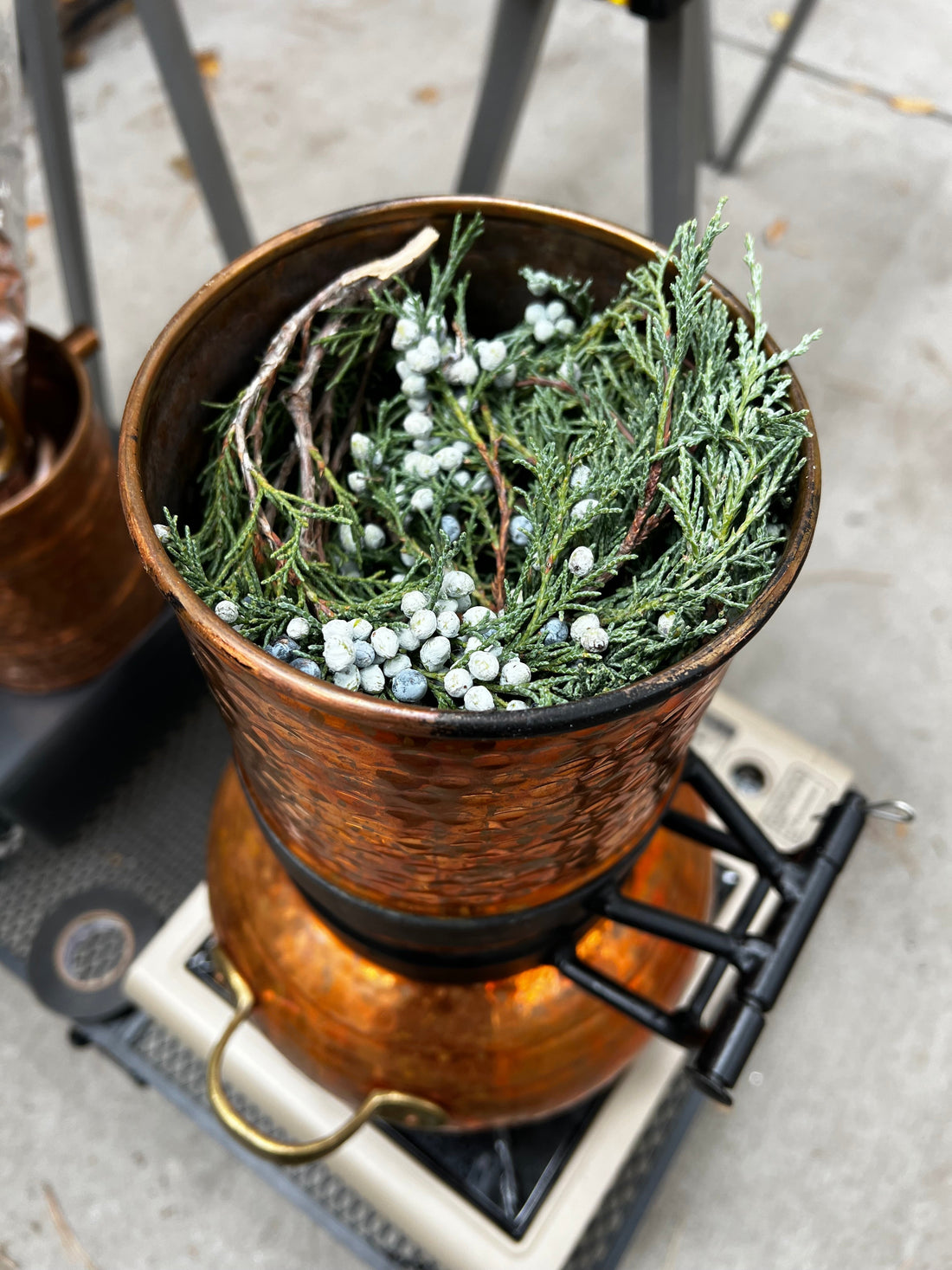
FIELD NOTE 001: Wild Juniper, Walker Ranch
Share
Boulder Front Range · October 12
We started the hike at Walker Ranch just after mid-morning, the trail mostly quiet and the air cool and dry. Cloud cover kept the sun soft. We weren’t rushing, part of this whole project is letting the environment set the pace.
Juniper grows all over the loop, but we waited for the eastern slope where the tips looked resin-rich and hydrated. Clayton cut lower branch tips and berries while I held the bag and shook out spiders and sunbaked debris, sealing small amounts from many plants. Slow, quiet, and light on the land.
Back home, we spread everything in a single layer to dry in shade for a week. The needles stayed dark green and flexible—dry, not brittle—exactly where we wanted to start.
Distillation happened outdoors, steady and unhurried. Four pulls, each sealed separately, logged without blending. This is the beginning of a public archive of our practice—real attempts, in real conditions, from places we actually hike and live.
Batch Log (technical)
Plant & Harvest
- Plant: Juniper (needles, tips, stems, berries)
- Parts Used: Lower branch tips + some woody stem + berries
- Location: Walker Ranch Loop — Boulder Front Range (~7000 ft)
- Harvest Conditions: Cool, overcast, dry air, low wind
- Harvest Date & Time: October 12 — late morning
- Drying: ~7 days, shaded, single layer, ventilated
- Plant Texture at Charge: Dark green, supple; dry not brittle
Still Setup
- Outdoor Temp During Run: ~66°F, cloudy, no wind
- Water: 3.0 L distilled
- Plant Mass: 332 g
- Still Configuration: Copper column still
- Heat Source: Butane camp stove
- Start Time (heat on): ~1:00 pm
- Boil Time (first drip): ~1:18 pm
- Heat Adjustments: Gradual increase to stabilize ~5–8 drops/sec
- Condenser Flow: ~550 mL/min
Pulls
- Pull 1: 300 mL — stopped 1:45 pm — bright, volatile top notes
- Pull 2: 300 mL — stopped 2:20 pm — rounder mid-body
- Pull 3: 300 mL — stopped 2:57 pm — deeper body
- Pull 4: 300 mL — stopped 3:21 pm — final fraction
Post-Run Handling
- Storage: Jars sealed & labeled individually
- Rest/Aging: Resting before evaluation — no blending yet
- Next-Day Notes: Unopened; evaluation scheduled after rest phase
Reflection / Next Steps
Four clean pulls with clear separation on a first run is a win. Next, we’ll test a slower heat curve to see if it lifts the top fraction, begin time-series sensory notes as these rest, and play with the mass-to-water ratio to balance yield and aroma integrity.
Why We Document: We keep a public record of these distillations as part of our craft—to show the process, the learning, and our evolving relationship with botanicals over time. This archive exists as a living part of Seed Theory’s story and reflects our commitment to small-batch, hands-on work with plants.

